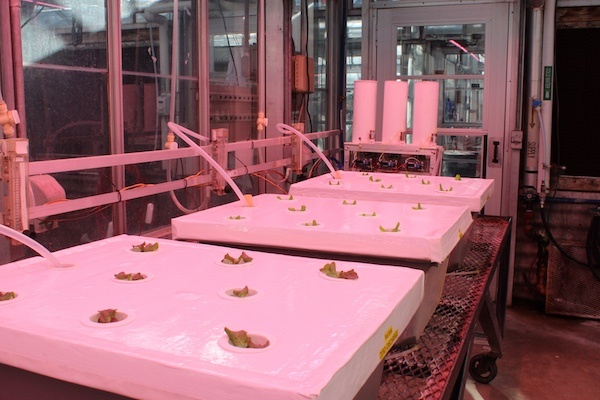Fish waste to fertilizer: Sustainable alternatives within agriculture
Joe Masabni, a vegetable extension specialist and professor at Texas A&M, visited Utah State University on Oct. 17 to present his latest findings on recycling fish waste and turning it into a sustainable source of natural fertilizer.
Aquaponics is a combination of hydroponics and aquaculture. It involves farming fish waste and supplying it to plants as a source of nutrients, creating a soilless farming technique and a sustainable recirculating system.
“Fish waste is considered a contaminant,” Masabni said. “Fish growers, or what I call culture operations, want to make sure that none of that waste gets into rivers or lakes.”
Aquaponics utilizes fish effluent as a resource rather than treating it as a contaminant.
“This waste that is a challenge to dispose of is a rich source of nutrients,” Masabni said. “Why are we throwing it away when we can treat it, adjust it, analyze it and recycle it back into the operation?”
The roots of the plants filter the waste water, which can then be returned to the fish.
According to Masabni, this source of plant nutrients is cost-effective and serves as a sustainable addition to the use of chemical fertilizers.
“If you set up fish tanks and filtration, you have a free source of nutrients from the fish effluent that will save you on the cost of chemical fertilizer,” Masabni said.
Not only can this process be utilized by small scale aquaponics operations and home gardeners but also by large scale hydroponics operations.
“I don’t think it will replace chemical fertilizer in a hydroponic operation, but it can reduce the cost,” Masabni said. “For an aquaponic operation, they will just have better growth and better yields.”
According to Masabni, phosphorus is a critical component of fertilizer, and its availability is gradually decreasing, leading to rising costs for chemical fertilizers.
“We hope that with this process we are able to have a source of phosphorus in our fertilizer just from the fish waste,” Masabni said. “It is sustainable in every way possible.”
While recycling fish waste as fertilizer is a relatively old idea, it has been recently growing in popularity.
“I was at the recent Aquaponics Conference, and other universities are working on fish effluent as a source of nutrients as well,” Masabni said.
Similar research in waste recycling is happening at USU under the Plants, Soils and Climate Department.
Bruce Bugbee, professor of environment plant physiology, and Noah Langenfeld, Ph.D. student, are researching the study of hydroponics for space farming.
Their research into zero discharge agriculture is similar to aquaponics in its focus on recycling waste.
“There’s nothing magic about aquaponics,” Bugbee said. “We need to do a better job, in all of agriculture, of recycling waste back to soils.”
According to Bugbee, a key component of successful aquaponics recycling is the proper compost of the fish waste. Compost requires a microbial bioreactor between the plant and fish tanks large enough to filter the water to suitable nutrient levels.
“Commercially, it is rarely done because it is hard to keep those in balance,” Bugbee said. “Usually people don’t put a big enough bioreactor in the middle, and then their plants don’t grow right, or they have difficulties keeping their nutrients in balance.”
While the aquaponics system is simple in theory, it requires proper maintenance and monitoring in order to achieve balance and results.
“The biggest thing that we’re trying to stress with aquaponics is microorganisms are the key,” Langenfeld said. “You can’t just connect a fish tank to a tank with plants in it, you have to have some type of reactor or space where microbes can live and make those conversions.”

